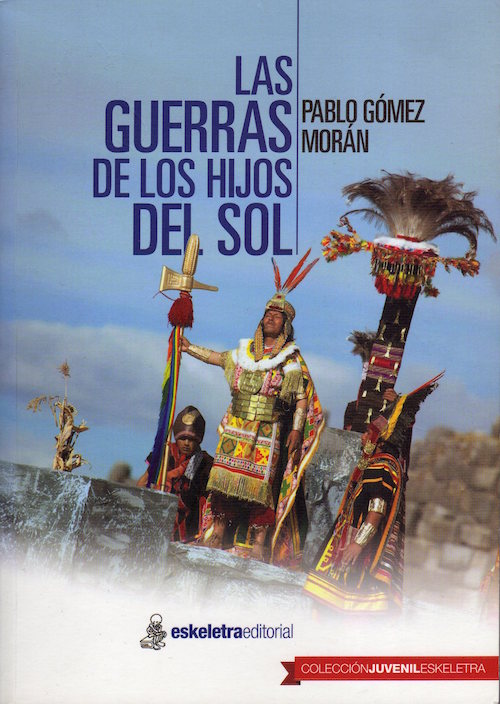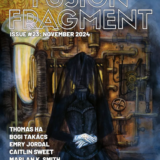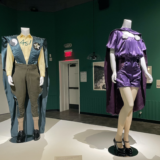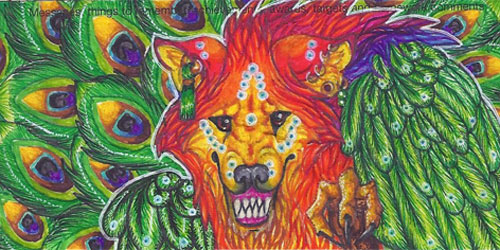
When I was a kid growing up in what was then West Berlin, we used to spend quite a few family weekends at the city’s various museums. A favourite was the ethnographic museum in Berlin-Dahlem: a hodgepodge treasure trove of cultural plunder ranging from Polynesia (I blame my infatuation with the South Pacific on those early museum visits) through the ancient cultures of Mexico and Mesoamerica, to the arts of China, India, and the Islamic world.
When I grew older, I still loved to visit the museum. By then I was less interested in scrambling around on the reconstruction of a Polynesian sea-going vessel, and more in studying the paintings held in those collections: particularly the miniatures from India and Persia.
For a long time, I had a poster on my bedroom wall of the illustration from the Persian epic poem Shahnameh, which I have featured below: it depicts the story of Zal, an albino child who was abandoned by his father, who took him to be a demon. The baby was found and brought up by the magical bird Simurgh: a benevolent legendary creature with the head of a dog, the claws of a lion, and the body of a peacock.
The Simurgh – always a female – is known to be a defeater of poisonous snakes, and knowledgeable in the healing arts. Later, when Zal was married to the beautiful Rudaba, and she had a hard time giving birth to her child, Zal summoned the Simurgh, who instructed him to perform a Caesarean section. The child was the Persian hero Rostam, of whose feats many legends are told.
The Simurgh has been equated with the Arabic Anqa or Angha, and she also has parallels in Turkish, Kurdish and Azerbaijani folklore and legend. Similarities with the Greek phoenix and the Russian firebird also exist.
Enjoy this gallery of contemporary interpretations of this ancient Persian mythical creature!

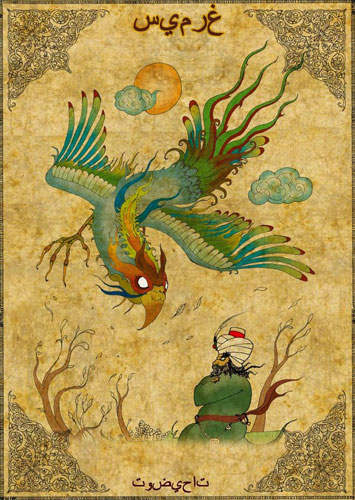

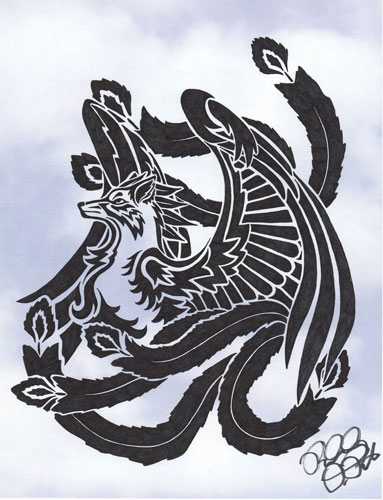


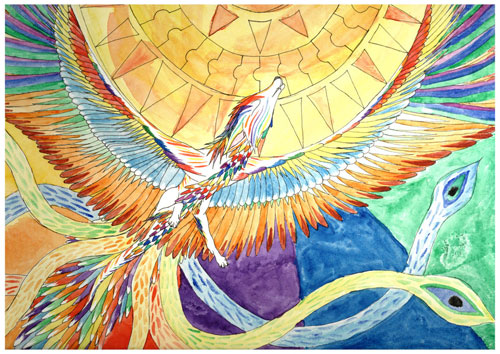



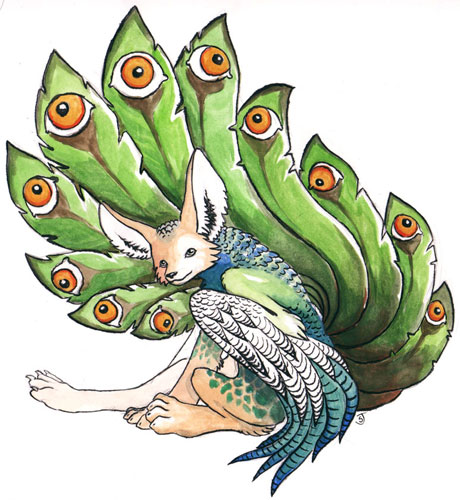
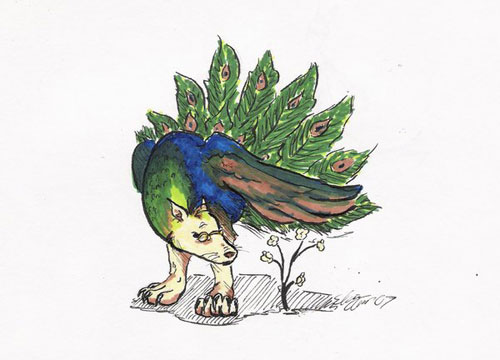
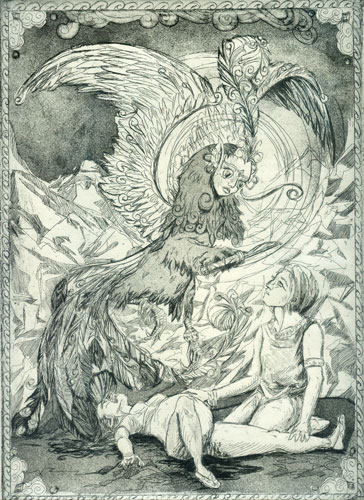


All images are copyright the respective artists, and may not be reproduced without permission.




